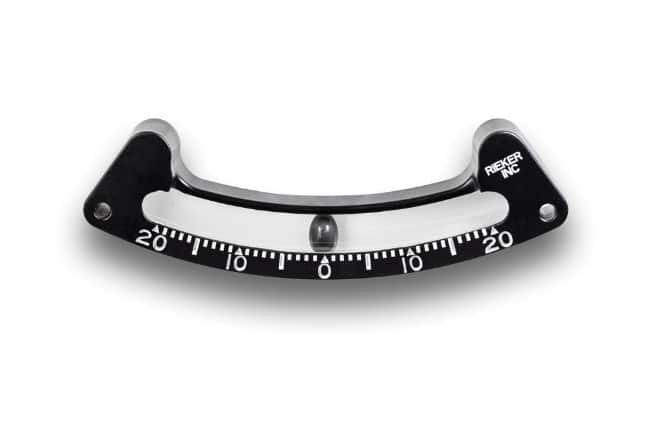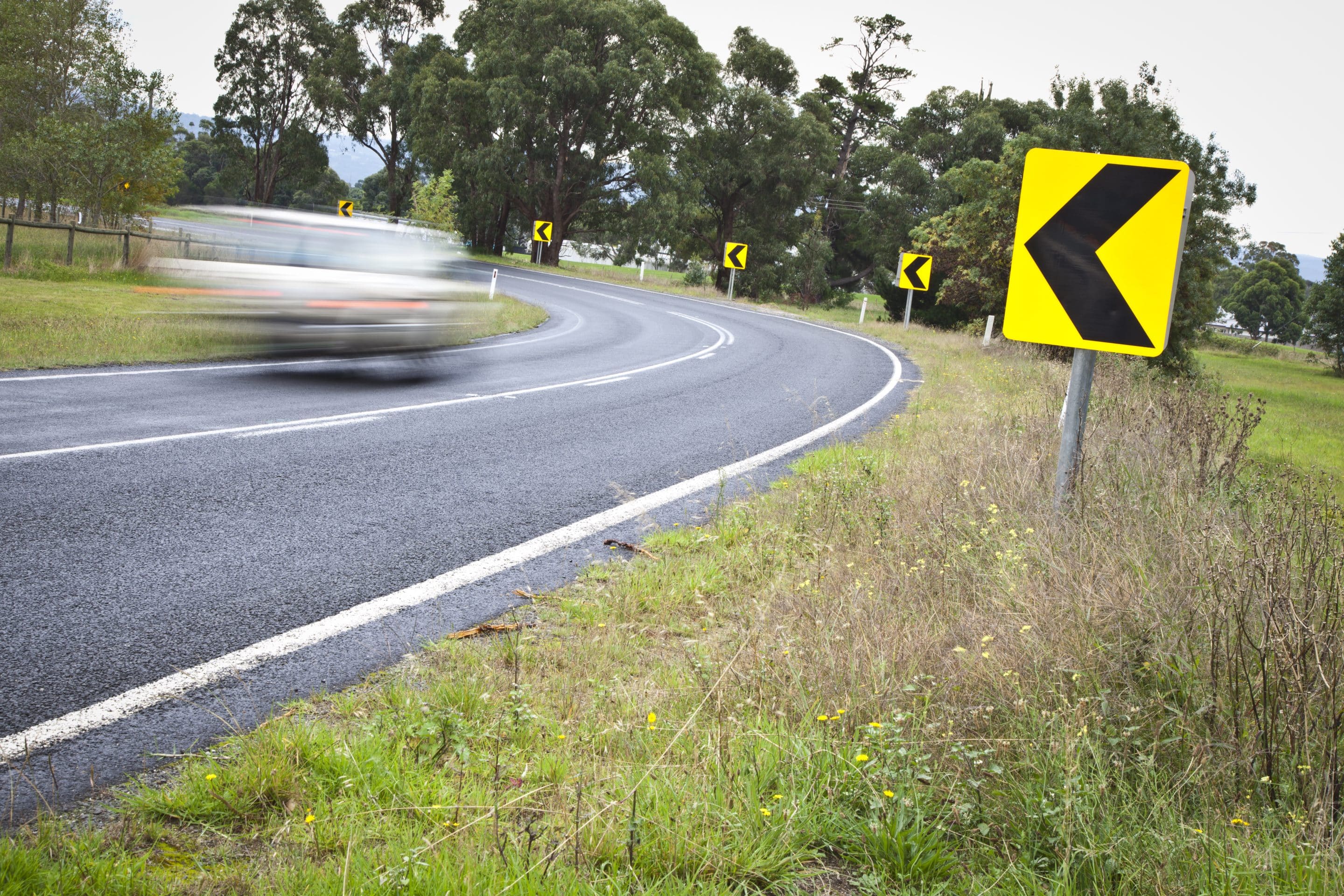




Chevron Alignment Markers (CAMs) are one of the most mis-used signs on the public road network. They should only be used on substandard curves. A minimum of three CAMs are required in a series and two CAMs must be visible to a driver/rider at any one time.
To determine if CAMs are warranted, follow these steps:
First, identify what the advisory speed is for the curve:
🔸 Determined by measuring the centripetal force exerted on a vehicle through the curve.
🔸 Find max travel speed where centripetal force exerted is not too great (‘comfortable’).
🔸 Common tool is the ball bank indicator.
🔸 From this information, the type of curve warning sign can be determined.
Second, determine the 85th percentile approach speed using survey or experienced judgement.
Third, use Figure 4.6 of AS1742.2 (reproduced here). CAMs should be considered where the comfortable (advisory) speed is at least 15 km/h less than the 85th percentile approach speed.
The first CAM in each direction of travel should be located as follows:
Two-way roadway:
🔹 Left-hand curve—on prolongation of the dividing line
🔹 Right-hand curve—on prolongation of the left-hand edge line
One-way roadway:
🔹 Left-hand curve—on prolongation of the right-hand edge line.
🔹 Right-hand curve—on prolongation of the left-hand edge line
Correctly used (CAMs) can reduce run-off-road crashes by 30%.
Photos:
1. An old-school ball bank indicator
2. A new ball bank indicator
3. Kenn Beer and Jamie Robertson undertaking curve assessments in the South West of Victoria
4. CAMs on the Victorian road network
5. Figure 4.6 of AS1742.2
